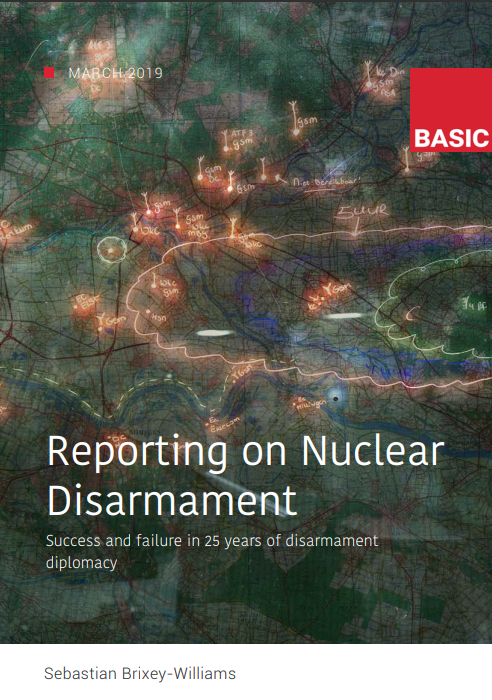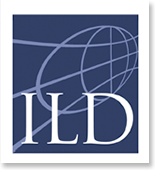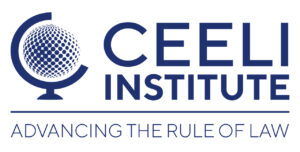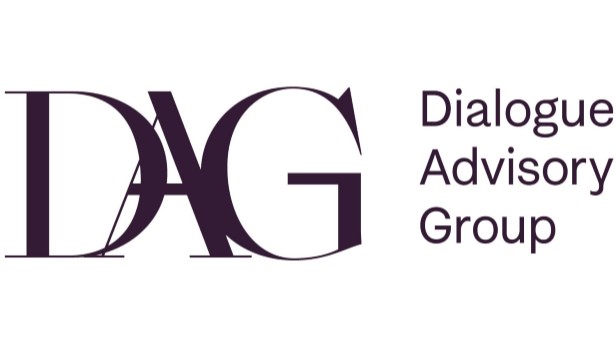This document comprehensively reviews the successes and challenges faced in nuclear disarmament efforts over the past quarter-century. Progress has been made since the Cold War, largely due to agreements such as the Comprehensive Nuclear Test Ban Treaty (CTBT) and the Treaty on the Non-Proliferation of Nuclear Weapons (NPT). However, rising tensions between nuclear-armed states and the absence of a disarmament framework have hindered further advancement.
It emphasizes the need for a clear understanding of a ‘step-by-step approach’ to nuclear disarmament within the disarmament community. It suggests a more ‘integrative’ approach, aiming for cooperation and synergy between various methods. The report concludes by offering recommendations and sharing insights to streamline the reporting on nuclear disarmament and rekindle public interest.
- Deprioritization and Stigmatization: Compared to deterrence and counterproliferation, nuclear disarmament is stigmatized and overlooked, resulting in less public and policy attention from Nuclear Weapon States (NWS).
- Lack of Progress: Despite NWS’ legal obligations to disarm since 1970, nuclear weapons still significantly impact international security. Meaningful disarmament talks remain elusive, causing despondency and resentment.
- Tribalism and Politicking: An ‘integrative’ nuclear disarmament approach is needed due to the international community’s reluctance to adopt a single method. Favoring one approach can obstruct progress and be detrimental.
- Slowing Regime: The regime may be slowing to a crawl, which could be considered a failure. The rapidly evolving strategic, political, and technological context raises concerns about unlikely further steps towards nuclear disarmament.
- Need for Comprehensive Approach: A comprehensive nuclear disarmament approach is needed, acknowledging the policy community’s diverse perspectives. Relying too much on one approach can cause tunnel vision and impede progress.
Overview
What is nuclear disarmament?
Begins by explaining the concept. It then emphasizes its holistic nature and wider implications. Furthermore, it underlines the complexity and interconnection of the process, thereby highlighting the necessity for an all-inclusive approach. This approach should focus on the technical aspects of disarmament and broader security and strategic considerations.
- Definition: Refers to the irreversible and verifiable elimination of nuclear weapons, aiming for a world where peace and security are maintained without nuclear deterrence.
- Holistic Process: Nuclear disarmament not only reduces stockpiles, it also tackles the motivations behind nuclear weapons ownership. This comprehensive approach enhances global security and curbs the nuclear arms race.
- Transition to Peaceful Security Doctrines: Aims to eliminate nuclear weapons and establish alternative security doctrines not reliant on nuclear deterrence. This involves the physical removal of weapons and a shift in strategic thinking.
- Addressing Root Causes: Strives for physical weapon elimination and addresses the root causes of proliferation, striving for a more stable global environment.
Is nuclear disarmament still relevant?
Delves into the enduring relevance and pressing urgency of nuclear disarmament efforts globally. Essentially, it underscores the critical need for sustained attention to nuclear disarmament, particularly considering the shifting global security landscape and the amplified risks linked to nuclear weapons. Moreover, it emphasizes the importance of boosting public awareness and breathing new life into discussions on nuclear disarmament to effectively address the urgent issues posed by nuclear proliferation and potential conflicts.
- Increased Risk: Despite the Cold War’s end, nuclear catastrophe risk today is reportedly higher. Experts like former U.S. Defense Secretary William J. Perry underscore the increased likelihood of nuclear weapons usage, emphasizing the importance of nuclear disarmament.
- Public Awareness: Public awareness and engagement with nuclear disarmament is worryingly low, even among educated groups. While experts see the urgent need for disarmament, the public often perceives a low risk, resulting in neglect of these vital issues.
- Emerging Power Competition: Global power competition, dividing nuclear states, could escalate conflicts, such as those involving the US, China, Russia, and NATO, highlighting the importance of nuclear disarmament.
- Shift to Nationalism: The shift from multilateralism to nationalism raises the risk of nuclear conflict, underscoring the need for renewed nuclear disarmament efforts.
Nuclear disarmament since the Cold War
Provides a historical perspective on the evolution of nuclear disarmament efforts after the Cold War. It highlights key milestones and challenges and discusses the changing global security landscape influencing contemporary disarmament discourse.
- Historical Context: Details the historical importance of disarmament activism, from its roots in the Manhattan Project’s opposition to global movements against atmospheric nuclear testing in the late 1950s. It peaks with Reagan and Gorbachev’s 1980s declarations, indicating a move from nuclear dependence.
- Post-Cold War Era: The end of the Cold War in the early 1990s brought optimism for nuclear disarmament. The indefinite extension of the Nuclear Non-Proliferation Treaty (NPT) 1995 signified a global commitment to reducing nuclear arsenals.
- Global Security Paradigm: World leaders aimed to shift from a nuclear competition-based security model to one of cooperation, reevaluating nuclear deterrence and seeking alternatives for peaceful state coexistence without nuclear weapons.
- Legal Obligations: Highlights the NWS’s legal obligations under the NPT to negotiate disarmament in good faith. However, the slow progress of multilateral negotiations has raised concerns about disarmament efforts.
Approaches to Nuclear Disarmament today
Examines various conceptual strategies and change models within the international nuclear weapons policy community. Importantly, it highlights the complexity of the disarmament landscape by showcasing the diverse perspectives and strategies stakeholders employ to advance nuclear disarmament. Understanding these approaches is vital for effectively navigating the challenges and opportunities within the disarmament regime.
- Diverse Stakeholders: Nuclear disarmament involves stakeholders like state officials, think tank professionals, and others, collectively shaping policies, laws, and norms on nuclear weapons.
- Conceptual Approaches: Outlines leading conceptual approaches to nuclear disarmament, each offering a unique perspective on achieving disarmament goals. While these approaches may sometimes appear mutually exclusive, they collectively set the context for international action and play complementary roles in advancing disarmament efforts.
- Theoretical Models of Change: The international nuclear weapons policy community discusses various theoretical change models. These models provide frameworks for understanding how disarmament can be achieved, though none offer a foolproof plan. Understanding these models helps situate changes and critiques within the disarmament regime.
- Complementary Strategies: Despite differences in approaches, the section emphasizes that these strategies are often complementary. While they may occasionally seem incompatible, the shared goal of nuclear disarmament unites these approaches. However, conflicting priorities can sometimes hinder progress, underscoring the need for stakeholder coordination and collaboration.
Key successes in nuclear disarmament since 1995
Emphasizes notable achievements in nuclear disarmament over the past few decades, particularly highlighting key successes since 1995. It underscores the importance of establishing norms against nuclear testing. Additionally, it outlines current challenges in achieving comprehensive disarmament goals. Despite progress in some areas, there’s a clear need for collective efforts to reinforce disarmament norms and move towards a world free of nuclear weapons.
- Abandonment of Nuclear Testing: The voluntary moratorium on nuclear testing since the early 1990s is a major success. Despite exceptions like India, Pakistan, and North Korea, a robust norm against nuclear testing has emerged, leading to fewer tests.
- Comprehensive Test Ban Treaty (CTBT): The report discusses the CTBT, a treaty banning nuclear testing. It hasn’t been enacted due to political obstacles, especially in the U.S. The U.S. Senate’s failure to ratify it in 1999 underscores the difficulties securing universal commitment to nuclear disarmament treaties.
- Norm Against Testing: The norm against nuclear testing, reflecting a shift in attitudes, is a success. The reduced need for physical tests due to technology like supercomputers is recognized. Yet, the CTBT’s enforcement is crucial to reinforce this norm.
- Challenges and Barriers: Challenges remain in achieving nuclear disarmament despite progress. Politics, national interests, and inertia impede treaty implementation. Overcoming these needs international cooperation and commitment.
Key failures in nuclear disarmament
Outlines major challenges and shortcomings in the quest for nuclear disarmament. It underscores systemic obstacles, stigma, and a lack of progress significantly impeding comprehensive disarmament. To address these issues, there undeniably needs to be a unified effort to raise the importance of disarmament, surmount existing hurdles, and encourage a more inclusive and cooperative approach to accomplishing a world without nuclear weapons.
- Deprioritization and Stigmatization: Nuclear disarmament is marginalized compared to other nuclear policies like deterrence and counterproliferation. The lack of public and NWS attention has stigmatized disarmament efforts, discouraging new professionals from engaging, thus perpetuating inaction.
- Lack of Progress in Multilateral Disarmament: Despite NWS’s legal duty to negotiate in good faith, multilateral disarmament talks have been sluggish. The report emphasizes the ongoing dependence on nuclear weapons for international security and the lack of significant progress in disarmament agreements, raising questions about the potency of current frameworks.
- Public Perception and Policy Priorities: The overlooked issue of nuclear disarmament is often overshadowed by short-term trends in the media. The lack of public interest and accountability has diminished emphasis on policy talks. The report highlights the need to rejuvenate public interest for significant progress.
- Challenges in Overcoming Stigma: Overcoming stigma and promoting inclusivity in nuclear disarmament is challenging. The report highlights the need to acknowledge diverse views within the policy community and foster stakeholder cooperation for effective disarmament.
Conclusion
The report on nuclear disarmament reaffirms the main points discussed throughout the document. Firstly, it emphasizes the urgent need for ongoing efforts. Secondly, it highlights the importance of multilateral cooperation. Furthermore, it underscores the value of inclusive strategies. In addition to these points, the importance of public involvement cannot be overstated. Finally, the necessity for persistent advocacy to promote nuclear disarmament amidst complex global dynamics and enduring challenges becomes abundantly clear.
- Urgency of Nuclear Disarmament: Underscores the enduring need for nuclear disarmament amidst changing strategic, political, and technological challenges. Despite previous victories and current endeavors, advancing towards a nuclear-free world remains crucial.
- Importance of Multilateral Cooperation: Multilateral cooperation is essential for advancing nuclear disarmament goals. It highlights the significance of engaging diverse stakeholders, including state officials, civil society actors, and experts, in collaborative efforts to address the complexities of disarmament.
- Need for Inclusive Approaches: Emphasizes inclusive nuclear disarmament strategies, valuing diverse perspectives, and promoting stakeholder cooperation to overcome challenges and advance disarmament goals.
- Call for Public Engagement: Underlines boosting public interest in nuclear disarmament for democratic accountability and progress. Enhancing public discourse on disarmament is vital to maintain momentum and promote policy changes.
- Continued Advocacy and Action: Stresses the continuous need for action and dedication to nuclear disarmament, urging stakeholders to collectively work towards a nuclear-free world despite past challenges.




